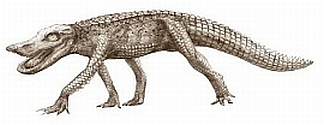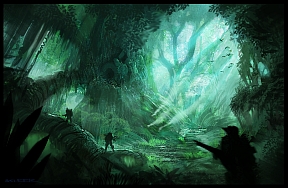This past week hasn’t been a good week for getting game stuff done. I was out of town much of the week visiting Ridgeview Classical Schools in Fort Collins, Colorado. Their mission, philosophy, et cetera, are very similar to ours where I teach in Katy, Texas, so my school sent me and two other teachers there to kick down doors and loot ideas.
So, about game stuff: A couple of weeks ago, Man Day Adventures kicked off the first session of our new Stars Without Number campaign, meta-titled Amazing Future Tales. As the GM, I’ve decided to pummel the heck out SWN with rules stolen from other games. You can read about the first session here. You can check out the wacky house rules here.
Assuming you read the first session, you noticed one of the characters issuing assignments to the other characters. I didn’t plan that. The players, especially Terry, made all of that up on the spot. I liked that. It made the story more theirs and less mine. It also keeps me from having do prep work as a GM. I’ve got a bare-bones plot for the adventure. I’m ad-libbing the rest with the help of the players. How can that be a bad thing?
A few weeks ago, I played a session of InSpectres. In that game, players have wide-ranging ability to determine specific plot elements, in effect making up the plot as the game progresses. It was a hoot and a half.
To explain simply, characters have a certain number of dice divided between four broad areas of competence. The characters interact with the game environment, the player rolls the applicable number of dice, and the highest result (most of the time) determines how much of the narrative is controlled by whom. A really great die roll means the player has almost carte blanche to determine the result of the roll. Lesser results impose specific restrictions, and the least results give the GM the carte blanche.
I’m mulling using a modified version of the InSpectres narrative resolution mechanic with Amazing Future Tales. At the moment, I’m not quite sure what that’d look like. My initial instinct is for each player to have a pool of “story dice” that they can use to determine results. The player decides how many “story dice” to use for a given situation. The more dice rolled, the greater the chance the player gets to dictate the results. Once “story dice” are used, they are deducted from the player’s pool.
For example, let’s say that the players have just uncovered something mysterious (such as the man who attacked A.J. in our first session). As the GM, I don’t know who this man is. Wes said he wanted to see how combat worked, so I had his character get ambushed. Maybe one of the players, however, has a good idea about who this man is. Let’s say this player is Gary.
Gary decides to spend a couple of “story dice”. He rolls and gets a good result. Gary can then make his idea about the man’s identity, circumstances, et cetera, an official part of the story.
Gary could say, “Well, after we get him cleaned up, I recognize him as a researcher from a different station closer to the coast. He’s weak and feverish from exposure and sickness, but he could provide important information about what’s really going on the jungle.”
Could I have come up with that on my own? Obviously, since I just did, but that’s not the point. The point is that one of my players gets to help shape the narrative-in-progress to make the story more like what he wants it to be.
Again, how can that be a bad thing?
Tags: Amazing Future Tales, game play, Stars Without Number


 Centuries ago, when we moved into Stelo Sector to explore and colonize, settlers discovered the first Konstruaĵo sites, which, by that time, were already hundreds of centuries old. To this date, no one can say with certainty what happened to the Konstruaĵo or even what the Konstruaĵo looked like.
Centuries ago, when we moved into Stelo Sector to explore and colonize, settlers discovered the first Konstruaĵo sites, which, by that time, were already hundreds of centuries old. To this date, no one can say with certainty what happened to the Konstruaĵo or even what the Konstruaĵo looked like. The Shenzi chaser hunts the veldt of the Shenz Highland. These carnivorous flightless birds stand taller than a man, and a full grown adult male can weigh more than 350 pounds. What makes these predators dangerous isn’t their size, speed, and powerful kicks. Rather, it is the Shenzi chaser’s piercing screech, a sonic attack that the bird uses to disable fleeing prey. This screech has a range of 60 feet and requires an attack roll with a +2 bonus to hit. A living creature struck by the screech takes 2d4+2 points of damage and must make a saving throw or be stunned helpless for 1d6 rounds. If the screech misses by 4 or less, the sonic waves strike the ground near the target, causing an explosion in a 5-foot radius that inflicts 1d6+1 points of damage. Those caught in the blast must make a Dexterity check or be knocked prone.
The Shenzi chaser hunts the veldt of the Shenz Highland. These carnivorous flightless birds stand taller than a man, and a full grown adult male can weigh more than 350 pounds. What makes these predators dangerous isn’t their size, speed, and powerful kicks. Rather, it is the Shenzi chaser’s piercing screech, a sonic attack that the bird uses to disable fleeing prey. This screech has a range of 60 feet and requires an attack roll with a +2 bonus to hit. A living creature struck by the screech takes 2d4+2 points of damage and must make a saving throw or be stunned helpless for 1d6 rounds. If the screech misses by 4 or less, the sonic waves strike the ground near the target, causing an explosion in a 5-foot radius that inflicts 1d6+1 points of damage. Those caught in the blast must make a Dexterity check or be knocked prone.